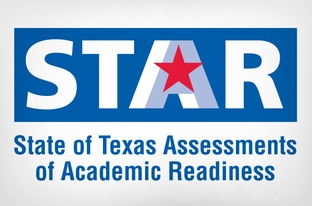Math scores on the end-of-course algebra exams, in particular.
Texas’ first trove of 2021 state standardized test scores offers early confirmation of what many educators feared: students fell dramatically behind in math during the coronavirus pandemic.
Results from spring algebra tests given to Texas high school students show a major decline in performance compared to 2019, particularly among Black, Hispanic and lower-income students.
By contrast, performance on high school English tests slightly dipped this year, mirroring nationwide studies suggesting that students’ reading skills continued to develop — albeit slower — throughout the pandemic.
Taken together, the scores offer one of the state’s earliest looks at the academic fallout from the pandemic, which upended education across Texas and pushed millions of children into online-only classes for varying lengths of time.
The results further validate concerns that students’ math development, in particular, has taken the biggest hit among core subjects. While children continue to gain literacy and language skills through everyday interactions, students are less likely to acquire math skills without regular classroom instruction.
“Just think of anything you do regularly — sports, cooking, playing the piano. When you don’t do that thing, you get rusty,” Sarah Powell, an associate professor for the University of Texas at Austin’s College of Education, wrote in an email. “The same holds true with math.”
[…]
Scores on the two reading tests, English I and English II, held more steady. Passage rates on the English I exam slipped slightly, from 74 percent to 71 percent, as did rates of scoring on grade level (from 60 percent to 55 percent). Scores on English II, which fewer high schoolers take, essentially were unchanged.
Student demographic groups that historically have performed worse on the exams saw their scores drop the most. The share of Texas students scoring on grade level in Algebra I fell dramatically among Black students, from 53 percent to 28 percent, Hispanic students, from 64 percent to 34 percent, and students considered “economically disadvantaged” by the state from 59 percent to 31 percent.
The demographic trends showed up in Houston. Five of the region’s largest districts serving predominantly non-white and lower-income students — Alief, Aldine, Fort Bend, Houston and Pasadena ISDs — saw drops ranging from 25 percentage points to 33 percentage points in their share of students on grade level in Algebra I. More affluent districts saw declines of 15 percentage points or less, including Conroe, Katy and Humble ISDs.
We will get the STAAR results, which students still had to take, later this month. I hope we learned something from this experience that will help going forward, because the students sure paid for it. I also hope the federal COVID relief funds will be well used to get tutoring and remedial help to all the students who need it.

